
Jorgensen Laboratories introduces the OB sleeve, a glove that gives additional coverage to the whole shoulder and underarm area.

Jorgensen Laboratories introduces the OB sleeve, a glove that gives additional coverage to the whole shoulder and underarm area.

Bluegrass Equine Products Inc. introduces the Deluxe Equine Slipper, developed to aid in treating, medicating and protecting the equine hoof.

ECB Equine Ltd. introduces the equine cold-water spa, a cold-salt hydrotherapy that assists in the treatment of a wide range of injuries and conditions, including tendonitis, arthritis, sore shins, open wounds, infections and general skin conditions.

This is an idea we use in our veterinary hospital whenever the chorus of complaints rise from staff and doctor. It is a good way to address complaints, such as, "The instruments need cleaning, and two people are standing around doing nothing."

St. Charles, Mo. ? Royal Canin Veterinary Diet? launched a new line of dental diets for dogs and cats to help prevent dental plaque and tartar formation.

Bayer introduces its reminder program targeted to pet owners in need of scheduling a veterinary appointment or a medication refill alert for their pets.

Andis Company introduces two sets of universal clipper blades for grooming.

Acumed Medical introduces ETPS 1000, a hand-held, portable device that locates acupuncture/trigger points and stimulates with concentrated direct current (DC) impulses.

Not everyone's suited for a career as a relief veterinarian. But if you communicate well in different environments, manage your time and money wisely, and maintain a professional demeanor, you could be well positioned for relief practice. Here's a more comprehensive list of qualities every relief doctor needs.

AFP Imaging introduces the Image Vet 70 ACP dental radiography unit.
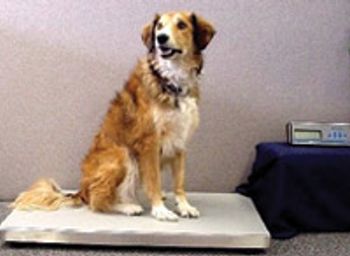
Jorgensen Laboratories introduces a walk-on scale for canines at the veterinary practice.

In an effort to better market our clinic's services, we placed laminated information about services and promotions inside inexpensive, animal-themed picture holders and displayed these holders in high-traffic areas of the clinic, such as exam rooms.

We give a lot of metronidazole to cats. Unfortunately, it can be difficult to get cats to take the pills because of the bad taste.

For the safest use of long-term medications such as nonsteroidal anti-inflammatory drugs (NSAIDs) and antihistamines, our hospital follows a set policy of periodic blood testing.

At our clinic, like many clinics, we put informational labels on the medication vials we dispense to clients.

For cats that urinate over the side of the litter box and also don't like covered boxes, take the lid off a covered litter box, flip it over, and fill the bottom with litter.

Veterinarians are well-suited to rise to the very top of public-health organizations.
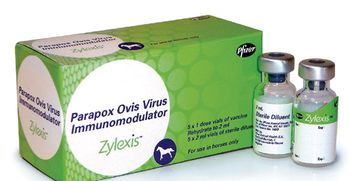
New York — Pfizer's immunomodulator Zylexis? is now available in the United States for horses after almost a decade of use and patient data in Germany.
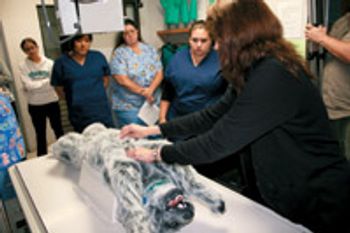
Rescue Critters introduces canine manikins to help prepare students to properly position dogs for abdominal surgery, spay and neutering, X-ray, advanced spinal stabilization, spinal recumbence and more.
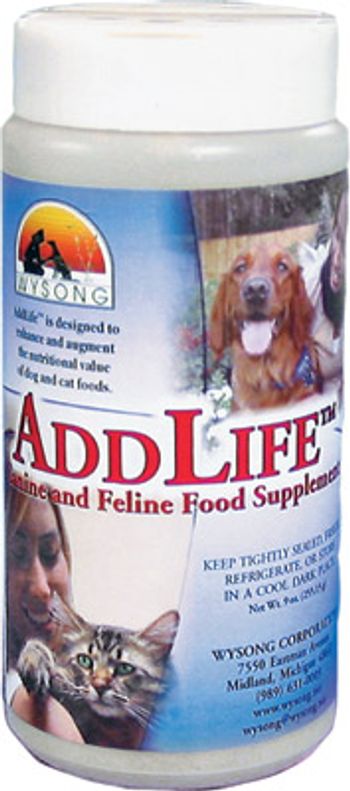
Wysong Corp. introduces Addlife?, a concentrated natural food source of active enzymes, probiotic cultures, amino acids, vitamins, fatty acids, antioxidants and more.
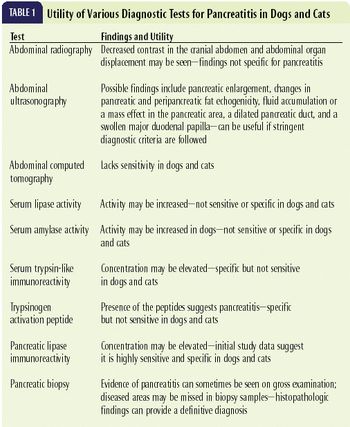
Dogs and cats with pancreatitis commonly display nonspecific clinical signs, so the condition can be difficult to diagnose. But there also has been a lack of diagnostic tests for pancreatitis that are both sensitive and specific. In this article, I provide an overview of the available diagnostic tests, including a new serum test.

Bluegrass Equine Products Inc. introduces the Deluxe Equine Slipper, developed to aid in treating, medicating and protecting the equine hoof.

Mast Technology announces an integration with Eponatech's Metron-PX software.

Nutramax introduces Oxstrin, a veterinary exclusive oxidative stress inhibitor containing super oxide dismutase (SOD) complex.

Veterinarians are well-suited to rise to the very top of public-health organizations.
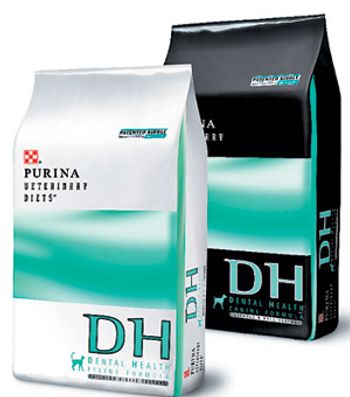
St. Louis — Nestl? Purina has created new dental health diets that reduce tartar with customized kibble size and complete nutrition for daily feeding of adult dogs and cats.

Novartis acquires Vetsuite? software tools, an integrated package of veterinary software tools from Intelligent Content Corp.

Clean Air Plus introduces the IQAir GC MultiGas, an advanced HEPA air purifier with activated carbon designed to remove gaseous compounds, odors and particulates in veterinary environments.

We compiled this list of the 10 most common hazards to dogs, based on the number of calls we have received at the aspca Animal Poison Control Center (APCC) between 2001 and 2005.